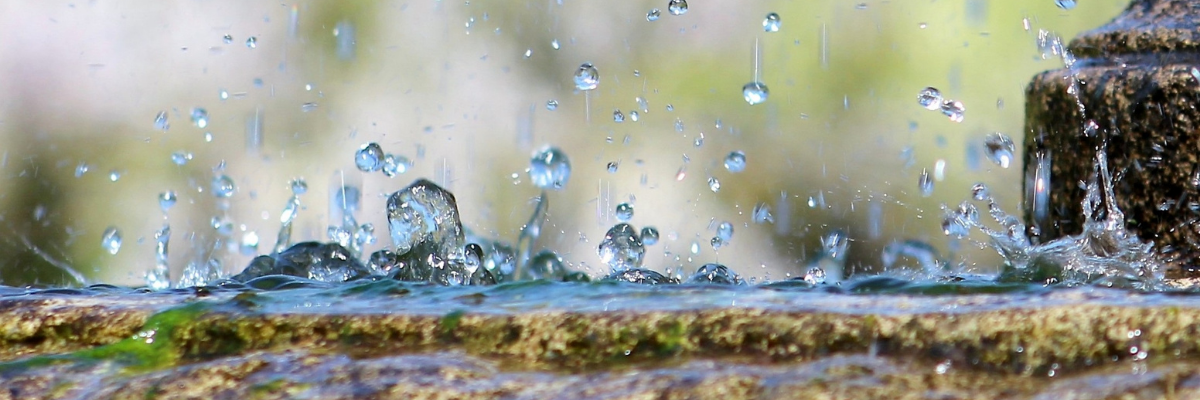Contents
German cities have an average of 210 rainy days per year. Even if it has become a little less in recent years, it rainsalmost 60% of the year, which raises the question for experienced pilots: Can I fly my drone in the rain? In short: it depends on the type of drone! Before you simply try it out with your drone, you should pay attention to a few things
Summary
-
The protection class is crucial!
-
Problem: No information to be found
-
Very light rain is (usually) unproblematic
-
Prevention helps! Example: Certified drone or comprehensive insurance
What happens to my drone in the rain?
Most drones are not weatherproof - in other words, they have only limited protection against moisture. A common reason for crashes is a short circuit in an electronic component. The cause can also be contact with wet grass or melting snow. Large ventilation slots in the housing allow moisture to penetrate quickly and critical components such as motor controllers or motherboards are damaged. Expensive repairs are then inevitable. The protection class defines how much water is too much
Protection classes and where to find them
Like many electrical devices, drones must also be assigned to a protection class. The protection classes summarised in the IP standard EN 60529 describe the protection of devices against the ingress of foreign bodies and moisture . They are labelled using a simple key consisting of two letters "IP“ followed by two digits. The first digit indicates the degree of protection against dust, the second against water
Basically, "the higher the number, the more water-resistant the drone". You can see from the table whether your drone is water-resistant
The protection class is often listed in the technical data of the manual. If it is not listed there, you can assume that there is littleor no protection against moisture
Waterproof drones, i.e. those with the highest protection classes, are usually "industrial drones" for commercial use. The DJI M300 RTK drone has a protection class of IP45 and the associated H20 camerashave an IP44 rating. This is currently the best rating on the drone market. The Mavic 2 series or drones from Yuneec, on the other hand, do not specify a protection class at all
Other problems that can arise
Short circuits are not the only reason for crashes. It may be hard to believe, but icing can also push drones to their performance limits. This happens at high Humidity and temperatures around freezing point.
The formation of ice can change the aerodynamics and weight of the drone. This has a negative effect on the flight behaviour. Caution is therefore advised in winter! Drifting snow is also only suitable for drone flying to a limited extent, as the battery loses power at low temperatures and the snow on the drone can melt. If you want to use your drone reliably in cold weather, you should make sure that the batteries are self-heating and that no melt water can penetrate. Then nothing stands in the way of a winter flight. In the event of an approaching thunderstorm, operationshould be stopped as quickly as possible, as lightning and thunder are not good friends of aviation. Lightning strikes are more and more likely with increasing altitude, as lightning seeks the path of least resistance. Like any electrical device, drones are also susceptible to excessive electrical currents and high voltages. The simplest, but also most fatal consequence: all systems fail and the aircraft crashes
Drone wet - what to do?
If it does happen and the drone has become slightly wet due to the rain, the first thing you should do is switch it off and remove or unplug the battery. A few hours in a dry room should suffice until the device is ready for use again. The situation is different when landing in water. Once the drone is completely soaked, it can quickly become very dangerous. The lithium battery can blow up due to the short circuit and catch fire. The battery is the most critical component, which is why we always recommend storing it in a safety box - regardless of water contact
Salt water is even more critical than fresh water due to its higher conductivity, and under no circumstances should you use a hairdryer or carry out isopropanol baths. The drone will most likely suffer permanent damage and should not be taken into the air again
Drone repair by a professional
Send the device to the manufacturer or have it repaired in a suitable workshop. We advise you not to carry out repairs yourself, always call in a professional!
Have drones insured against water damage?
In addition to the mandatory liability insurance for drones, it is also possible to take out comprehensive insurance. For DJI, for example, DJI Care or DJI Shield are recommended. Various insurance companies offer their services independently of the manufacturer. Please contact your trusted insurance broker
